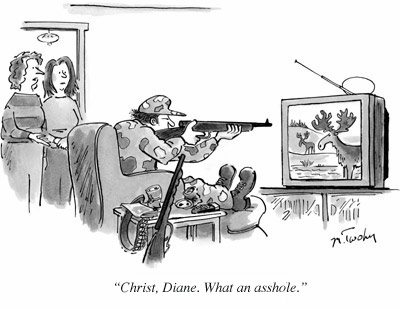28 Ιανουαρίου 2013
melani
27 Ιανουαρίου 2013
Perfectionism (psychology)
Perfectionism (psychology)
Contents[hide] |
[edit]Definition
[edit]Normal vs. neurotic perfectionists
[edit]Perfectionistic strivings vs. perfectionistic concerns
[edit]Measurement
[edit]Multidimensional Perfectionism Scale (MPS)
[edit]Almost Perfect Scale-Revised (APS-R)
[edit]Physical Appearance Perfectionism Scale (PAPS)
[edit]Psychological implications
[edit]Positive aspects
“In a positive form, perfectionism can provide the driving energy which leads to great achievement. The meticulous attention to detail, necessary for scientific investigation, the commitment which pushes composers to keep working until the music realises the glorious sounds playing in the imagination, and the persistence which keeps great artists at their easels until their creation matches their conception all result from perfectionism.”[19]
[edit]Negative aspects
- Grandiosity – The deluded idea that things that are difficult for other people should be easy for you.
- Focus on Product over Process – Neglecting the journey of work while fixating on the outcome.
- Focus on External Rewards over Internal Ones
- Deprecation of the True Processes of Creativity and Career-Building
- Labeling – Harshly branding oneself with terms like stupid, lazy, wimpy, etc.
- Hyperbole – Overstating the negative.
22 Ιανουαρίου 2013
21 Ιανουαρίου 2013
- Ask the pupils to make a sequence of drawings based on one particular image to show how it might be adapted and developed to convey the idea of change over time or to communicate the idea of movement.
- Ask them to develop their series of drawings using line and colour to convey a particular mood, emotion or feeling. Encourage pupils to work on a variety of scales and seek out unusual interpretations.
Introduce the unit by discussing images that represent a variety of moods, emotions or feelings, eg panic, happiness, anger, anxiety. Ask the pupils to analyse and comment on the visual qualities of these images and to highlight key features,
eg gesture, harmony, movement, framing.
Ask them what they think and feel about these images
http://webarchive.nationalarchives.gov.uk/20061104184552/http://www.tate.org.uk/modern/exhibitions/juanmunoz/rooms/default.shtm
|
2dfield
The 2D Field: Area
Screen Space: fixed borders that defines the new aesthetic characteristics
• Aspect ratio: relationship of screen width to screen height
• Horizontal orientation
• Standard ratios
• Standard TV / computer screens adopted 4×3 ratio of early motion
pictures (1.33:1 ratio)
• Digital / HDTV – 16×9 (5.33×3 or 178:1)
• Standard wide screen of motion pictures (5.33×3 or 1.85:1)
• Panavision / Cinemascope has extremely wide aspect ratio – 7×3
(2.35:1)
• Wide-screen – format of most U.S. films
• Framing
• 4×3 frame (film standard was established as early as 1889)
• advantage is that the difference between screen width & height
does not emphasize one dimension over another
• works well with close-ups
• 16×9 frame
• have to pay more attention to the peripheral pictorial
elements/events
• Changing the Aspect Ratio
• Matching aspect ratio
• Letterboxing: wide screen letterbox is created by showing the whole
width & height of the original format, and masking the top and
bottom of the screen with black, white, or colored bands called
dead zones
• Pillarboxing: fitting a standard 4×3 image onto a 16×9 screen
(vertical pillar bars)
• Cutting, stretching, squeezing
• Secondary Frames
• Masking – blacking out both sides of the screen (ex. D.W. Griffith –
Intolerance)
• Multiple screens
• Moving camera
• Object size > context
• Knowledge of object
• Relation to screen area
• Environment & scale
• Reference to a person
• Image size
• Size constancy – we perceive people and their environments as
normal sized regardless of screen size
• Image size & relative energy
• Power of image is related to screen size & format
• People & things
The 2D Field: Forces within the Screen
Main directions
• Horizontal (ex. Renaissance architecture)
• Vertical (ex. Gothic Cathedrals)
• Horizontal/Vertical combination
• Tilting the horizontal plane
• Level horizon: stability
• Tilted horizon: dynamism
• Tilted horizon: stress
Magnetism of the Frame
• Top edge (ex. Headroom)
• Sides (ex. Positive /negative pull)
• Corners
• Centered object: even pull (ex. pull of entire frame)
• Large disc: expansion (ex. attraction of mass)
• Small disc: compression
Asymmetry of the Frame
• Up/Down diagonals
• Screen left/right asymmetry
• Tend to pay more attention to the right side than the left
• Figure & Ground
• Characteristics
• Figure is “thing like” – you perceive it as an object
• The line that separates the figure from the ground belongs to the
figure not the ground
• The figure is less stable than the ground
• The ground seems to continue behind the figure
• Superimposition – ambiguous figure/ground relationship
• Figure/Ground reversal
Psychological Closure: tendency to mentally fill in gaps in visual information to
arrive at complete & easily manageable patterns & configurations
• Gestalt – pattern that results from applying psychological closure (whole that
is larger than the psychological sum of its parts)
• Example 3 notes played together become a chord
• High & Low definition images: high definition images has more information
than a low definition image
• High – HDTV/film
• Low – standard TV
• Requires constant psychological closure
• Facilitating Closure – low definition image is helpful only if it facilitates,
rather than inhibits, closure
• Proximity – when similar elements lie in close proximity to one
another we tend to see them together
• Similarity – similar shapes are seen together
• Continuity – once a dominant line is established its direction is not
easily disturbed by other lines cutting across it
Vectors – directional forces that lend our eyes from one point to another (force
with direction & magnitude)
• Vector Field – combination of vectors operating within a single picture field;
picture field to picture field; picture sequence to picture sequence; screen to
screen; on screen to off screen events
• Vector Types
• Graphic Vector – stationary element that guides our eyes in a certain
direction
• Ambiguous direction
• Index Vector – points in a specific direction
• Vector Magnitude – determined by screen direction, graphic mass, perceived
object speed
• Z-axis vector: points toward or away from the camera
• The larger the graphic mass in motion, the higher its vector magnitude
• The faster the speed of an object the higher its vector magnitude
• Vector Directions
• Continuing Vectors – point in the same direction
• Converging Vectors – point toward each other
• Diverging Vectors – point away from each other
Chapter 8 – Structuring the 2D Field: Interplay of Screen Forces
Stabilizing the Field Through Distribution of Graphic Mass & Magnetic Force
• Graphic Weight
• Dimension
• Shape
• Orientation
• Location
• Color
• Hue
• Saturation
• Brightness
• Screen Center – most stable position of an object
• Off Center – the more the object moves off center the greater its
graphic weight and the attraction of the frame increases
• Counter weighting – achieve balance with another object of similar graphic weight
Stabilizing the Field Through Distribution of Vectors
• Structural Force of Index Vectors
• Nose room & Lead room – need to leave enough room otherwise it will feel cramped
• Nose room for index vectors
• Lead room for motion vectors
• Converging Vectors – can balance an index vector with a converging one within the same screen
• Graphic Vectors – can use mass to contain other graphic vectors Stages of Balance
• Stabile Balance – symmetrical structuring of visual elements
• Neutral Balance – graphic elements are asymmetrically distributed
• Golden Section – division of the screen into roughly 3×5 units
• Rule of Thirds – divide screen into 3 horizontal and 3 vertical fields
• Modular Units – adapted golden section proportions into a modular concept
• Labile Balance – distribution of graphic weight, frame magnetism, and vectors are pushed to their structural limit, creating a tendency for imbalance (high tension)
Object Framing
• Facilitating closure – organize structures into easily recognizable patterns
• Graphic Cues – facilitate psychological closure by arranging the vector field within the screen area so that all the vectors extend easily beyond the screen into the off screen space
• Premature Closure – improper framing can lead to early psychological closure
• Natural Dividing Lines –premature closure when framing at natural dividing lines
• Illogical Closure – tendency to group objects together into patterns regardless
of whether they belong together
The Aesthetic Edge Unusual Compositions – breaking compositional rules for emphasis
• Emphasis through off-center placement
• Emphasis through partial onscreen placement
Multiple Screens
• Increased information
Dividing the Screen: screens within a screen
• Graphic Blocks
• Secondary Screen
• 2-axis vectors in split screen
• Temporal & spatial contexts
• Temporal – when several simultaneous events are shown in separate, isolated secondary screens, the direction of the index & motion vectors within such screen is relatively unimportant
• Spatial – placement of screens in the primary screen space, and the direction of the index & motion vectors with a secondary frame become significant structural considerations
19 Ιανουαρίου 2013




